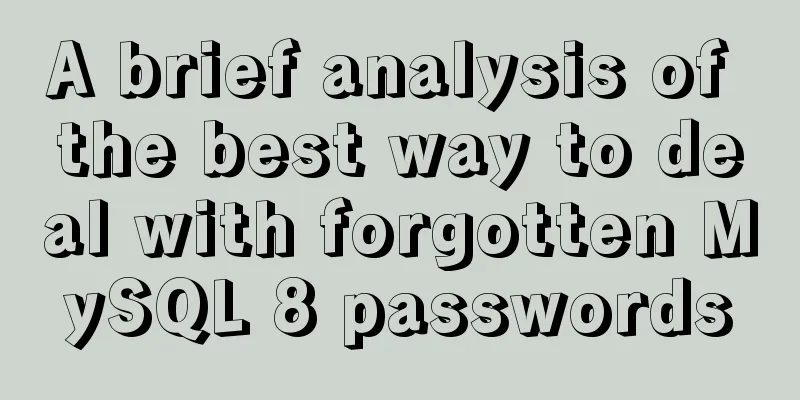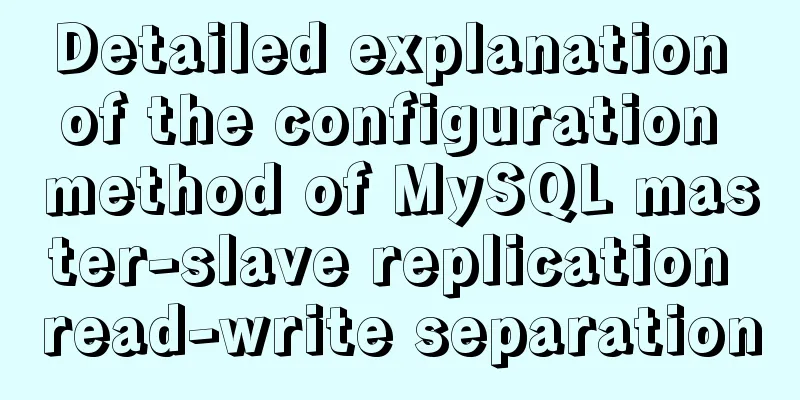Shtml Concise Tutorial

|
Shtml and asp are similar. In files named shtml, some instructions of ssi are used, just like the instructions in asp. You can write SSI instructions in SHTML files. When the client accesses these shtml files, The server will read and interpret these SHTML files, and interpret the SSI instructions contained in the SHTML files. For example, you can use SSI instructions in the SHTML file to reference other HTML files (#include). The file sent by the server to the client is the interpreted SHTML without SSI instructions. It realizes functions that HTML does not have, that is, it can realize dynamic SHTML, which can be said to be an evolution of HTML. Sina's news system is like this. The news content is fixed, but the advertisements and menus on it are referenced using #include. At present, there are mainly the following uses: 1. Display server-side environment variables <#echo> 2. Insert text content directly into the document <#include> 3. Display WEB document related information <#flastmod><#fsize> (such as file creation date/size, etc.) 4. Directly execute various programs on the server <#exec> (such as CGI or other executable programs) 5. Set the SSI information display format <#config> (such as file creation date/size display method) Advanced SSI <XSSI> can set variables using if conditional statements. Using SSI SSI is a set of commands provided for WEB servers. These commands can be directly embedded in the comment content of HTML documents. like: <#include file="info.htm"--> It is an SSI instruction, which copies the contents of "info.htm" to the current page. When visitors browse it, they will see the contents of info.htm displayed like other HTML documents. The usage of other SSI instructions is basically the same as the example just now. It can be seen that the use of SSI is just to insert a little code, and the usage is very simple. Of course, if the web server does not support SSI, it will simply treat it as comment information and skip the content; the browser will also ignore this information. How do I configure SSI functionality on my web server? On some WEB servers (such as IIS 4.0/SAMBAR 4.2), files containing #include directives must use extensions that have been mapped to the SSI interpreter; otherwise, the Web server will not process the SSI directive; by default, the extensions .stm, .shtm, and .shtml are mapped to the interpreter (Ssinc.dll). Apache depends on your settings. Modify srm.conf as follows: AddType text/x-server-parsed-html .shtml will only parse SSI directives for files with the .shtml extension AddType text/x-server-parsed-html .html will parse SSI directives for all HTML documents Netscape WEB server can enable SSI function directly by using Administration Server. Website uses the Mapping tag in the Server Admin program, and the extension adds the content type: wwwserver/html-ssi The Cern server does not support SSI. You can use the SSI scam method and download a PERL script from http://sw.cse.bris.ac.uk/WebTools/fakessi.html to make your CERN server use some SSI instructions. (The exec directive is not supported.) SSI instruction basic format The basic format of SSI instructions is: Program code: <!-– Command name="Command parameters"> <!-– Command name="Command parameters"> Such as program code: <#include file="info.htm"--> <#include file="info.htm"--> illustrate: 1. <!-- --> is a comment in HTML syntax. When the WEB server does not support SSI, this information will be ignored. 2. #include is one of the SSI directives. 3. file is the parameter of include, info.htm is the parameter value, which refers to the name of the document to be included in this instruction. Notice: 1. There is no space between <!-- and the # sign, only between the SSI command and the parameter. 2. The punctuation marks above = "" cannot be missing. 3. SSI directives are case sensitive, so the arguments must be lowercase to work. Detailed explanation of SSI instructions #echo Demonstration function: Insert environment variables into the page. grammar: Program code: <!--#echo var="variable name"--> <!--#echo var="variable name"--> This document's name: Program code: <!--#echo var="DOCUMENT_NAME"--> <!--#echo var="DOCUMENT_NAME"--> Current time: Program code: <!--#echo var="DATE_LOCAL"--> <!--#echo var="DATE_LOCAL"--> Your IP address is the program code: <!--#echo var="REMOTE_ADDR"--> <!--#echo var="REMOTE_ADDR"--> #include Demonstration function: Insert the contents of a text file directly into a document page. grammar: Program code: <#include file="file name"--> <#include virtual="file name"--> <#include file="file name"--> <#include virtual="file name"--> file The file name is a relative path, relative to the directory where the document using the #include directive is located. The included file can be in the same directory or its subdirectories, but not in the previous directory. For example, if it means the nav_head.htm document in the current directory, then file="nav_head.htm". The virtual file name is the full path to the virtual directory on your Web site. For example, if it means the nav_head.htm file in the hoyi directory under the server document root directory, then file="/hoyi/nav_head.htm" parameter: file specifies the location of the included file relative to this document virtual specifies the location relative to the server document root. Note: 1. The file name must have an extension. 2. The included file can have any file extension. I think it is most convenient to use the .htm extension directly. Microsoft recommends using the .inc extension (it depends on your preference). Example: Program code: <#include file="nav_head.htm"-->Insert the header file into the current page <#include file="nav_foot.htm"-->Insert the footer file into the current page <#include file="nav_head.htm"-->Insert the header file into the current page <#include file="nav_foot.htm"-->Insert the footer file into the current page #flastmod and #fsize Demonstration: #flastmod The date the file was last updated #fsize file length syntax: Program code: <!--#flastmod file="file name"--> <!--#fsize file="File name"--> <!--#flastmod file="file name"--> <!--#fsize file="File name"--> parameter: file specifies the location of the included file relative to this document, such as info.txt means the info.txt document in the current directory virtual specifies the location relative to the server document root directory, such as /hoyi/info.txt. Note: The file name must have an extension. Example: Program code: <!--#flastmod file="news.htm"--> <!--#flastmod file="news.htm"--> Insert the last updated date of the news.htm file in the current directory into the current page program code: <!--#fsize file="news.htm"--> <!--#fsize file="news.htm"--> Enter the file size of news.htm in the current directory into the current page #exec Demonstration function: Inserts the output of an external program into the page. Can be inserted into a CGI program or into a regular application, depending on whether the cmd or cgi argument is used. grammar: Program code: <!--#exec cmd="file name"--> <!--#exec cgi="file name"--> <!--#exec cmd="file name"--> <!--#exec cgi="file name"--> parameter: cmd General Application cgi CGI script program example: Program code: <!--#exec cmd="cat /etc/passwd"-->The password file will be displayed <!--#exec cmd="dir /b"--> will display the file list in the current directory <!--#exec cgi="/cgi-bin/gb.cgi"--> will execute the CGI program gb.cgi. <!--#exec cgi="/cgi-bin/access_log.cgi"--> will execute the CGI program access_log.cgi. <!--#exec cmd="cat /etc/passwd"-->The password file will be displayed <!--#exec cmd="dir /b"--> will display the file list in the current directory <!--#exec cgi="/cgi-bin/gb.cgi"--> will execute the CGI program gb.cgi. <!--#exec cgi="/cgi-bin/access_log.cgi"--> will execute the CGI program access_log.cgi. Notice: As you can see from the examples above, this instruction is quite convenient, but it also has security issues. Prohibited methods: . Apache, delete the line "Options Includes ExecCGI" in access.conf; . In IIS, to disable the #exec command, modify the SSIExecDisable metabase; #config Purpose: Specifies the format of error messages, dates, and file sizes returned to the client browser. grammar: Program code: <!--#configerrmsg="Custom error message"--> <!--#configsizefmt="Display unit"--> <!--#configtimefmt="display format"--> <!--#configerrmsg="Custom error message"--> <!--#configsizefmt="Display unit"--> <!--#configtimefmt="display format"--> parameter: errmsg Customize SSI execution error messages in any way you like. sizefmt file size display mode, the default is bytes ("bytes"), can be changed to kilobytes ("abbrev") timefmt Time display mode, the most flexible configuration attribute. Example: Display the size of a non-existent file program code: <!--#configerrmsg="Server execution error, please contact the administrator [email protected], thank you!"--> <!--#fsize file="Non-existing file.htm"--> <!--#configerrmsg="Server execution error, please contact the administrator [email protected], thank you!"--> <!--#fsize file="Non-existing file.htm"--> Display file size in kilobytes Program code: <!--#configsizefmt="abbrev"--> <!--#fsizefile="news.htm"--> <!--#configsizefmt="abbrev"--> <!--#fsizefile="news.htm"--> Display time program code in a specific time format: <!--#configtimefmt="%Y year/%m month %d day week %W Beijing time %H:%M:%s, %Y year has passed %j days today is %Y year %U week"--> <!--#echo var="DATE_LOCAL"--> Display today's day of the week, month, time zone <!--#configtimefmt="Today %A, %B, server time zone is %z, yes"--> <!--#echo var="DATE_LOCAL"--> <!--#configtimefmt="%Y year/%m month %d day week %W Beijing time %H:%M:%s, %Y year has passed %j days today is %Y year %U week"--> <!--#echo var="DATE_LOCAL"--> Display today's day of the week, month, time zone <!--#configtimefmt="Today %A, %B, server time zone is %z, yes"--> <!--#echo var="DATE_LOCAL"--> XSSI XSSI (Extended SSI) is a set of advanced SSI instructions built into the mod-include module of Apache 1.2 or higher. The available commands are: #printenv #set #if #printenv Function: Display all environment variables currently existing in the WEB server environment. Syntax: Program code: <!--#printenv--> <!--#printenv--> Parameters: None Example: Program code: <!--#printenv--> <!--#printenv--> #set Function: You can assign values to variables for use in subsequent if statements. Syntax: Program code: <!--#set var="variable name" value="variable value"--> <!--#set var="variable name" value="variable value"--> Parameters: None Example: Program code: <!--#set var="color" value="red"--> <!--#set var="color" value="red"--> #if Purpose: Creates a page that can change data that is displayed based on the calculation requirements when using an if statement. Syntax: Program code: <!--#if expr="$variable name="variable value A""--> Display content <!--#elif expr="$variable name="variable value B""--> Display content <!--#else--> Display content <!--#endif"--> <!--#if expr="$variable name="variable value A""--> Display content <!--#elif expr="$variable name="variable value B""--> Display content <!--#else--> Display content <!--#endif"--> Example: Program code: <!--#if expr="$SERVER_NAME="http://www.31896.net/""--> Welcome to the server security discussion area http://www.31896.net/. <!--#elif expr="$SERVER_NAME="http://www.fineacer.org/"" --> Welcome to the Fineacer Computer Network Security Online http://www.fineacer.org/. <!--#else--> Welcome to the Server Security Forum! <!--#endif"--> <!--#if expr="$SERVER_NAME="http://www.31896.net/""--> Welcome to the server security discussion area http://www.31896.net/. <!--#elif expr="$SERVER_NAME="http://www.fineacer.org/"" --> Welcome to the Fineacer Computer Network Security Online http://www.fineacer.org/. <!--#else--> Welcome to the Server Security Forum! <!--#endif"--> Note: The backslashes used in the previous directives are used to replace the inner quotes so that they are not interpreted as ending the expression. Cannot be omitted. 1. Config command The Config command is mainly used to modify the default settings of SSI. in: Errmsg: Set the default error message. In order to return the error message set by the user normally, the Errmsg parameter must be placed before other SSI commands in the HTML file, otherwise the client can only display the default error message instead of the custom message set by the user. <!--#configerrmsg="Error! Please email [email protected] --> Timefmt: Defines the format used for date and time. The timefmt parameter must be used before the echo command. <!--#configtimefmt="%A, %B %d, %Y"--> <!--#echo var="LAST_MODIFIED" --> The result is: Wednesday, April 12, 2000 Perhaps users are unfamiliar with the %A %B %d used in the above example. Below we summarize some of the more commonly used date and time formats in SSI in the form of a table. Sizefmt: Determines whether file sizes are expressed in bytes, kilobytes, or megabytes. If bytes are used, the value is "bytes"; abbreviations for kilobytes and megabytes can be used. Similarly, the sizefmt parameter must be placed in front of the fsize command to be used. <!--#configsizefmt="bytes" --> <!--#fsize file="index.html" --> 2. Include command The Include command can insert text or images from other documents into the currently parsed document, which is the key to the entire SSI. With the Include command, you can update your entire site instantly by just changing one file! The Include command has two different parameters: Virtual: Gives a virtual path to a document on the server. For example: <#include virtual="/includes/header.html" --> File: Give a relative path to the current directory. You cannot use "../" or an absolute path. For example: <#include file="header.html" --> This requires that each directory contains a header.html file. 3. Echo Command The echo command can display the following environment variables: DOCUMENT_NAME: Displays the name of the current document. <!--#echo var="DOCUMENT_NAME" --> The result is: index.html DOCUMENT_URI: Displays the virtual path of the current document. For example: <!--#echo var="DOCUMENT_URI" --> The result is: /YourDirectory/YourFilename.html As your website continues to grow, those increasingly long URLs can definitely be a headache. If you use SSI, all of this will be solved. Because we can combine the website's domain name with the SSI command to display the full URL, that is: http://yourdomain%3c!--/#echo var="& ... uot; --> QUERY_STRING_UNESCAPED: Displays the query string sent by the client without escape processing, in which all special characters are preceded by an escape character "". For example: <!--#echo var="QUERY_STRING_UNESCAPED" --> DATE_LOCAL: Displays the date and time in the server's set time zone. Users can customize the output information by combining the timefmt parameter of the config command. For example: <!--#configtimefmt="%A, the %d of %B, in the year %Y" --> <!--#echo var="DATE_LOCAL" --> The result is: Saturday, the 15th of April, in the year 2000 DATE_GMT: Same functionality as DATE_LOCAL, except that the date returned is based on Greenwich Mean Time. For example: <!--#echo var="DATE_GMT" --> LAST_MODIFIED: Displays the last update time of the current document. Similarly, this is a very practical function in SSI. Just add the following line of simple text in the HTML document to dynamically display the update time on the page. <!--#echo var="LAST_MODIFIED" --> CGI Environment Variables In addition to the SSI environment variables, the echo command can also display the following CGI environment variables: SERVER_SOFTWARE: Displays the name and version of the server software. For example: <!--#echo var="SERVER_SOFTWARE" --> SERVER_NAME: Displays the server's host name, DNS alias, or IP address. For example: <!--#echo var="SERVER_NAME" --> SERVER_PROTOCOL: Displays the protocol name and version used by the client request, such as HTTP/1.0. For example: <!--#echo var="SERVER_PROTOCOL" --> SERVER_PORT: Displays the server's response port. For example: <!--#echo var="SERVER_PORT" --> REQUEST_METHOD: Displays the client's document request method, including GET, HEAD, and POST. For example: <!--#echo var="REQUEST_METHOD" --> REMOTE_HOST: Displays the host name of the client that issued the request information. <!--#echo var="REMOTE_HOST" --> REMOTE_ADDR: Displays the IP address of the client that issued the request information. <!--#echo var="REMOTE_ADDR" --> AUTH_TYPE: Displays the authentication method of the user. <!--#echo var="AUTH_TYPE" --> REMOTE_USER: Displays the account name used by the user accessing the protected page. <!--#echo var="REMOTE_USER" --> 4. Fsize: Displays the size of the specified file. The output format can be customized by combining the sizefmt parameter of the config command. <!--#fsize file="index_working.html" --> 5. Flastmod: Displays the last modification date of the specified file. The output format can be controlled by combining the timefmt parameter of the config command. <!--#configtimefmt="%A, the %d of %B, in the year %Y" --> <!--#flastmod file="file.html" --> Here, we can use the flastmod parameter to display the update date of all linked pages on a page. Here’s how: <!--#configtimefmt=" %B %d, %Y" --> <A HREF="/directory/file.html">File</A> <!--#flastmod virtual="/directory/file.html" --> <A HREF="/another_directory/another_file.html">Another File</A> <!--#flastmod virtual="/another_directory/another_file.html" --> The result is: File April 19, 2000 Another File January 08, 2000 6. Exec The Exec command can execute CGI scripts or shell commands. Here’s how to use it: Cmd: Use /bin/sh to execute the specified string. If the IncludesNOEXEC option is used with SSI, this command will be blocked. Cgi: can be used to execute CGI scripts. For example, the following example uses the counter.pl script in the server's cgi-bin directory to place a counter on each page: <!--#exec cgi="/cgi-bin/counter.pl" --> |
<<: Detailed explanation of the problem of CSS class names
>>: Installation and use of Apache stress testing tools
Recommend
Detailed explanation of crontab scheduled execution command under Linux
In LINUX, periodic tasks are usually handled by t...
Usage instructions for the docker create command
The docker create command can create a container ...
Summary of MySQL data migration
Table of contents Preface: 1. About data migratio...
IE6 distortion problem
question: <input type="hidden" name=...
Detailed explanation of the adaptive adaptation problem of Vue mobile terminal
1. Create a project with vue ui 2. Select basic c...
Instructions for using the database connection pool Druid
Replace it with the optimal database connection p...
How to quickly install RabbitMQ in Docker
1. Get the image #Specify the version that includ...
Introduction to the use of form OnSubmit and input type=image
If there is an <input type="image">...
WeChat applet calculator example
WeChat applet calculator example, for your refere...
How to implement Svelte's Defer Transition in Vue
I recently watched Rich Harris's <Rethinki...
Detailed explanation of the solution to docker-compose being too slow
There is only one solution, that is to change the...
Tutorial on installing Ubuntu 20.04 and NVIDIA drivers
Install Ubuntu 20.04 Install NVIDIA drivers Confi...
How to install PHP7 Redis extension on CentOS7
Introduction In the previous article, we installe...
A bug fix for Tomcat's automatic shutdown
Preface Recently, a Java EE web project that has ...
17 JavaScript One-Liners
Table of contents 1. DOM & BOM related 1. Che...









